How are lingual braces made?
The Incognito™ and Win™ lingual appliances are both completely customised lingual appliances. This means that the brackets and the archwires are made to fit the individual patient. This both increases the comfort of the appliance, and means that the appliance consistently delivers the desired high quality treatment result.
The Incognito™ lingual appliance is constructed as follows. Either impressions or a digital scan of the patient’s teeth are made. This record is then sent to the incognito laboratory in Germany.

Manual set up of desired position of teeth
The teeth are then either set up on a plaster model manually , or set up on a digital (Virtual) model according to the detailed instructions given by Dr Buckley.

Digital set up of desired position of teeth
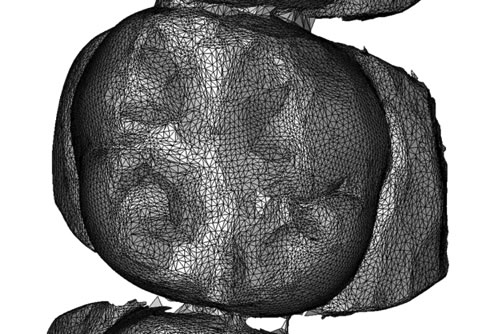
3D digital representation of a tooth from the target set up
A high-resolution optical 3D scanner permits non-contact scanning of the therapeutic target setup. The scan produces a 3 dimensional digital representation of the teeth consisting of many thousands of minute triangles that can be documented and processed in the computer.

The virtual brackets conform exactly to the individual patient’s dental morphology.
Specialized CAD/CAM software is used to design and build customized brackets and bases. Because of the extreme accuracy of the scan, the bases mold precisely to the teeth. Large pad surfaces provide greater bond strength and make them easy to place on the teeth for bonding and re-bonding.
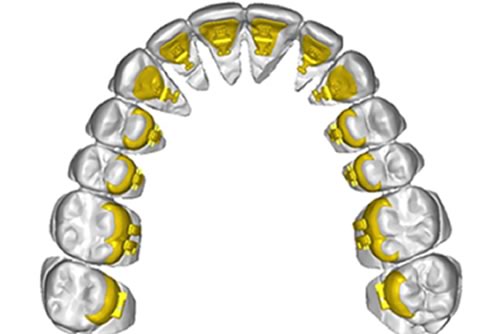
Complete set of virtual brackets constructed for an individual’s upper teeth.
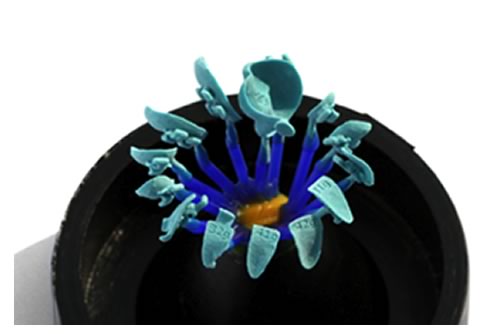
The virtual brackets are now a reality in wax (wax patterns) prior to casting.
Wax patterns of the virtual customized brackets are created using rapid prototyping wax printers

The final brackets after investment casting.
The patterns are then placed in an investment cast, burned out and a dental gold alloy is poured into the cast to create the brackets
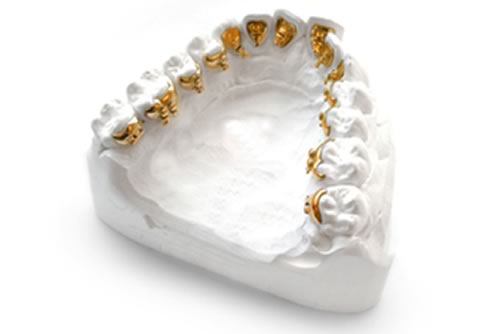
The polished gold brackets are placed on the original malocclusion model.
After casting the brackets are tumbled and polished until they are smooth to ensure high patient comfort. They are then positioned on the original malocclusion model.
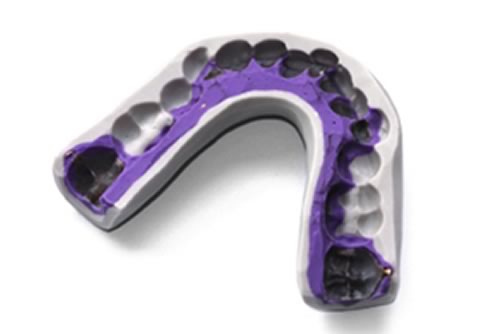
An indirect bonding tray containing the brackets
The brackets are transferred to the patient’s mouth using an indirect bonding technique. This involves constructing an indirect bonding tray which contains the brackets. This is constructed over the brackets which are set up on the original malocclusion model. All the brackets in one tray are bonded simultaneously to the inner surfaces of the teeth in one jaw.
Wire Fabrication

Computer designed wire to match the target set up of the teeth.
The wire geometry is calculated by the CAD/CAM program and then sent to a machine for fabrication. Each wire in the sequence has the same geometry targeted to the final position of the teeth.

Robot bending the arch wire to patient’s individual prescription.
All pictures of construction of incognito™ appliance courtesy of 3 m unitek
For details of the CAD/CAM construction of the incognito appliance please click here.
![]() Click here to view the PDF (See Pages 149-155) in reference to: ‘The Journal of the Irish Dental Association.’
Click here to view the PDF (See Pages 149-155) in reference to: ‘The Journal of the Irish Dental Association.’
If you wish to read about the fitting of and living with lingual braces – Click Here.




